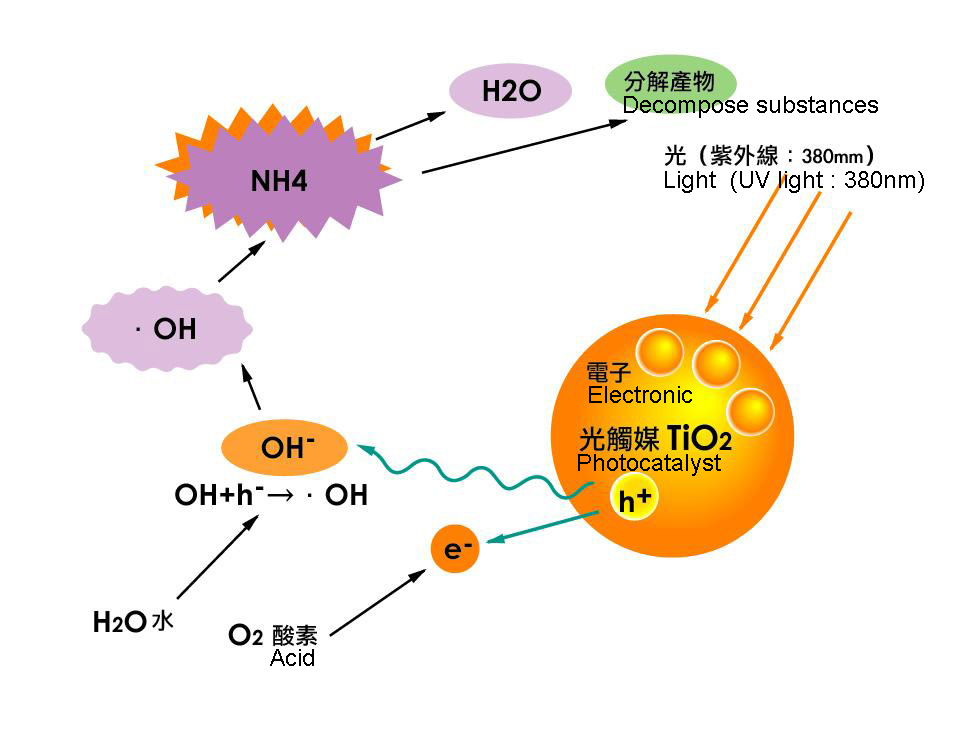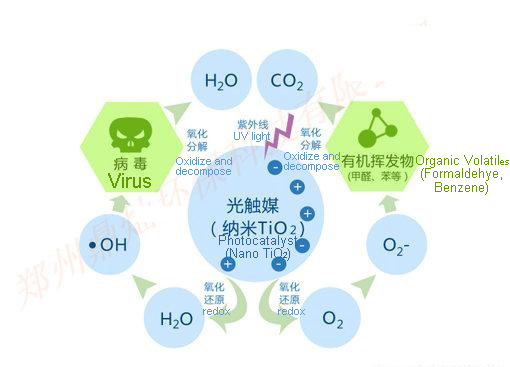01
ULTRAVILET TECHNOLOGY

Ultraviolet light is a general term for radiation from 0.01 to 0.40 micrometers in the electromagnetic spectrum and cannot cause people's vision. The ultraviolet rays in nature are derived from the sun. The electromagnetic spectrum has a radiation of 0.01~0.04 micrometers, which is the radiation between the visible purple end and the X-ray. Ultraviolet rays are classified according to wavelength: near-ultraviolet UVA, far-ultraviolet UVB and ultra-short ultraviolet UVC. The degree of penetration of ultraviolet light on human skin is different. The shorter the wavelength of ultraviolet light, the greater the damage to human skin. Short-wave UV rays can pass through the dermis, while medium waves can enter the dermis. Ultraviolet light with a wavelength of 200 to 290 nm can penetrate the cell membrane of bacteria and viruses, damage nucleic acids (DNA), and make cells lose their ability to reproduce and achieve rapid sterilization. Short-wavelength ultraviolet rays having a wavelength of 200 nm or less can decompose O2 molecules, and the generated O* combines with O2 to generate ozone O3. Ultraviolet rays and ozone have strong oxidative decomposition ability including organic molecules including malodor, and the synergistic effect of UV/O3 is exerted in air purification treatment. (Previously there were UV lamps, which were mostly used for disinfection in hospitals.)
02
ION TECHNOLOGY

The ionic air purifier is designed to adsorb particles onto the charged metal blades in the purifier. The blades push the air through the assembly to form a gas stream. The negative ions and positive ions attract each other, and the particles and smoke in the air are attached to the blades.
The advantages of ion technology are:
1. High-efficiency sterilization: sterilization rate >99% effectively inhibits influenza virus, bacterial transmission and cross infection;
2. Efficient dust removal: dust removal efficiency > 99% CADR 225m3 / hour, effectively remove allergens;
3. Effectively remove cigarette nicotine particles and smoke, effectively remove soot and odor;
4. Safe and effective decomposition of formaldehyde, benzene and other volatile organic matter decomposed into H2O and CO2, does not produce any other harmful substances and cause secondary pollution;
5. Energy-saving, silent work: no fan, plasma field automatically drives air circulation to provide ultra-low energy and soundless work;
6. The logo of low-carbon environmental protection: no need to replace the filter membrane, convenient for manual cleaning, repeated use.
03
PHOTOCATALYST TECHNOLOGY

Photocatalyst is a kind of nano-scale metal oxide material (titanium dioxide is commonly used). It is coated on the surface of the substrate and produces strong catalytic degradation under the action of light: it can effectively degrade toxic and harmful gases in the air; it can effectively kill a variety of bacteria and can decompose and harm the toxins released by bacteria or fungi. It also has functions such as deodorization and anti-fouling.
Photocatalyst must be exposed to ultraviolet light to function. If the sun is not available, if you want to activate the photocatalyst, you must add an additional UV lamp. The choice of UV lamp should be 254nm or 365nm. As for the weak light source such as natural light and fluorescent lamps, even under the condition of no light, the photocatalyst cannot function normally. The so-called "cold catalyst" that plays a role in the absence of light has lost the true meaning of "photocatalyst". However, too much ultraviolet light is harmful to the human body. Photocatalyst technology relies on ultraviolet light to illuminate the titanium oxide ions on the photocatalyst network, causing it to activate and oxidize bacteria that come into contact with its surface.











 Website:www.smartteam-hk.com
Website:www.smartteam-hk.com





